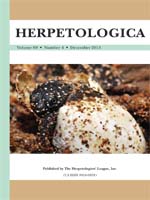The introduction of exotic tree species may interfere with conservation efforts for natural habitats, including grasslands in coastal sand dunes. Natural plant cover is used by several species in coastal dunes of Buenos Aires, Argentina, among them the lizard Liolaemus wiegmannii. Here we study the habitat use and abundance of this lizard inhabiting a psammophytic grassland within this ecosystem, where Acacia longifolia was recently introduced. Surveys and lizard sampling were conducted along 40 transects distributed in four independent zones of 75 ha, each with a different degree of invasion impact. We measured structural and thermal features in relation to A. longifolia and native plants. The lizard L. wiegmannii was three times more abundant in zones with ≤ 25% coverage of A. longifolia. The Jacobs selectivity index showed that all age classes selected native shrubs and avoided A. longifolia trees. These results were similar in greenhouse experiments. However, we found no differences in the use of any of these plants' (introduced or native) leaf litter. Structural and thermal characteristics of the habitat under the shrubs seemed to be more favorable for the physiological performance and behavior of L. wiegmannii, whereas the lower temperatures under A. longifolia might explain the lower presence of lizards in areas where this tree was introduced.
How to translate text using browser tools
1 December 2013
Effects of Tree Invasion on the Habitat Use of Sand Lizards
Oscar Aníbal Stellatelli,
Laura Estela Vega,
Carolina Block,
Félix Benjamín Cruz
ACCESS THE FULL ARTICLE

Herpetologica
Vol. 69 • No. 4
December 2013
Vol. 69 • No. 4
December 2013
Acacia
habitat selection
invasive plants
Liolaemus
Lizard abundance
Psammophytic grassland




